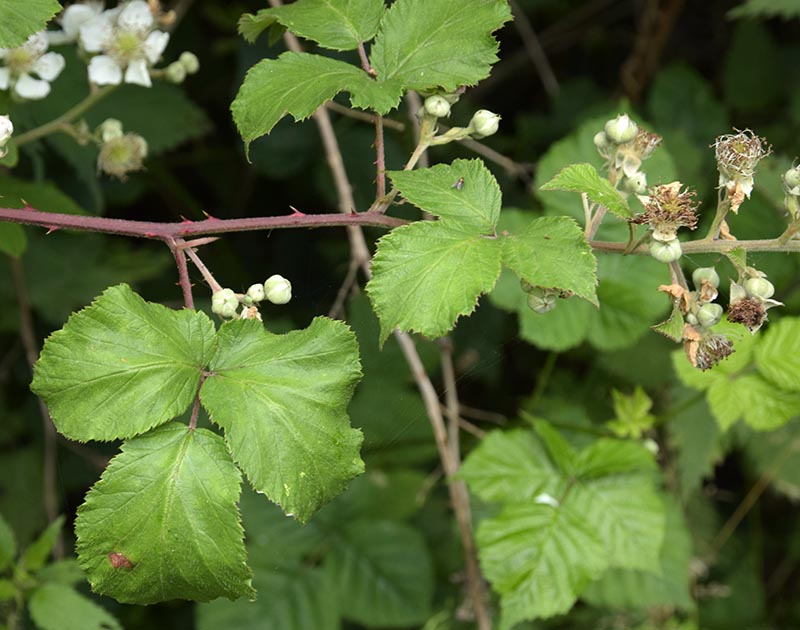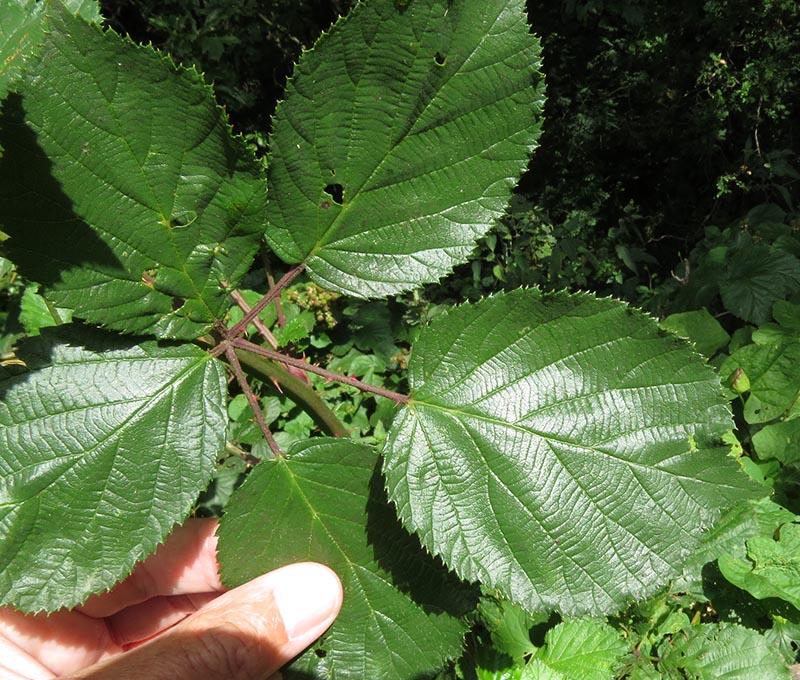
Rubus cardiophyllus – Series Rhamnifolii
back to Alphabetical index · Taxonomic index
This bramble has a distribution mainly west of a line from the Mersey to the Thames, avoiding the hilly districts of Wales and south-west England. It has a distinct preference for moist acidic soils, being common in alder, birch and drier types of willow carr, and sometimes at the edges of reed swamp and in marshy ground. It may also be found in other general bramble habitats, including scrub and woodland margins. Its most distinctive features are the panicles with white cupped
flowers and curled leaves and long-stalked terminal leaflets, often with a heart-shaped base.

It is quite an early flowering species, and the petals quickly become dishevelled and withered (above). Although the petals are usually white, a pink hue is visible on the ones below, photographed on a bush in deep shade. They are broadly elliptical, about 12mm x 10mm, curling in at the margins to give the cupped appearance of the flower. Note also that the base of each petal abruptly narrows to the claw
. Flowers are medium-sized, about 2.5cm in diameter. Stamens are longer than the green styles.


The rachis (stem of the panicle) is slightly zigzag, downy, with long, finely pointed declining prickles. This species does not usually have any stalked glands on the floral branches.

The leaves lower down the panicle have leaflets which characteristically curl over. Like the stem leaves they are glabrous and dull above. Sepals usually have no glands or acicles and are reflexed after flowering.


Stem leaves have a relatively long petiole and the terminal leaflet a long petiolule
, sometimes as long as the leaflet itself. The leaflets are often small and widely spaced and concave. The terminal leaflet is typically about 8cm long with a fairly long acuminate apex up to 1.5cm, but it is quite variable in shape from ovate, broadly elliptical or obovate, with the base rounded to cordate (heart-shaped). The margin is sharply and moderately deeply serrate but can be more coarsely serrate. Leaflets are glabrous and rather matt in appearance above but may be sparsely hairy when young.



Young leaf.

Leaflets are grey-felted below.


The stem often has pronounced ridges and furrows, and due to lack of hairs and stalked glands is often shiny (some stems may be shortly pubescent and sessile glands are present). Prickles are moderately dense to sparse, on the angles only, fairly stout and almost patent to slightly declining.



Note deep maroon colour of stem exposed to sun, long petiole and petiolule, concave leaflets with sharply toothed margins.
